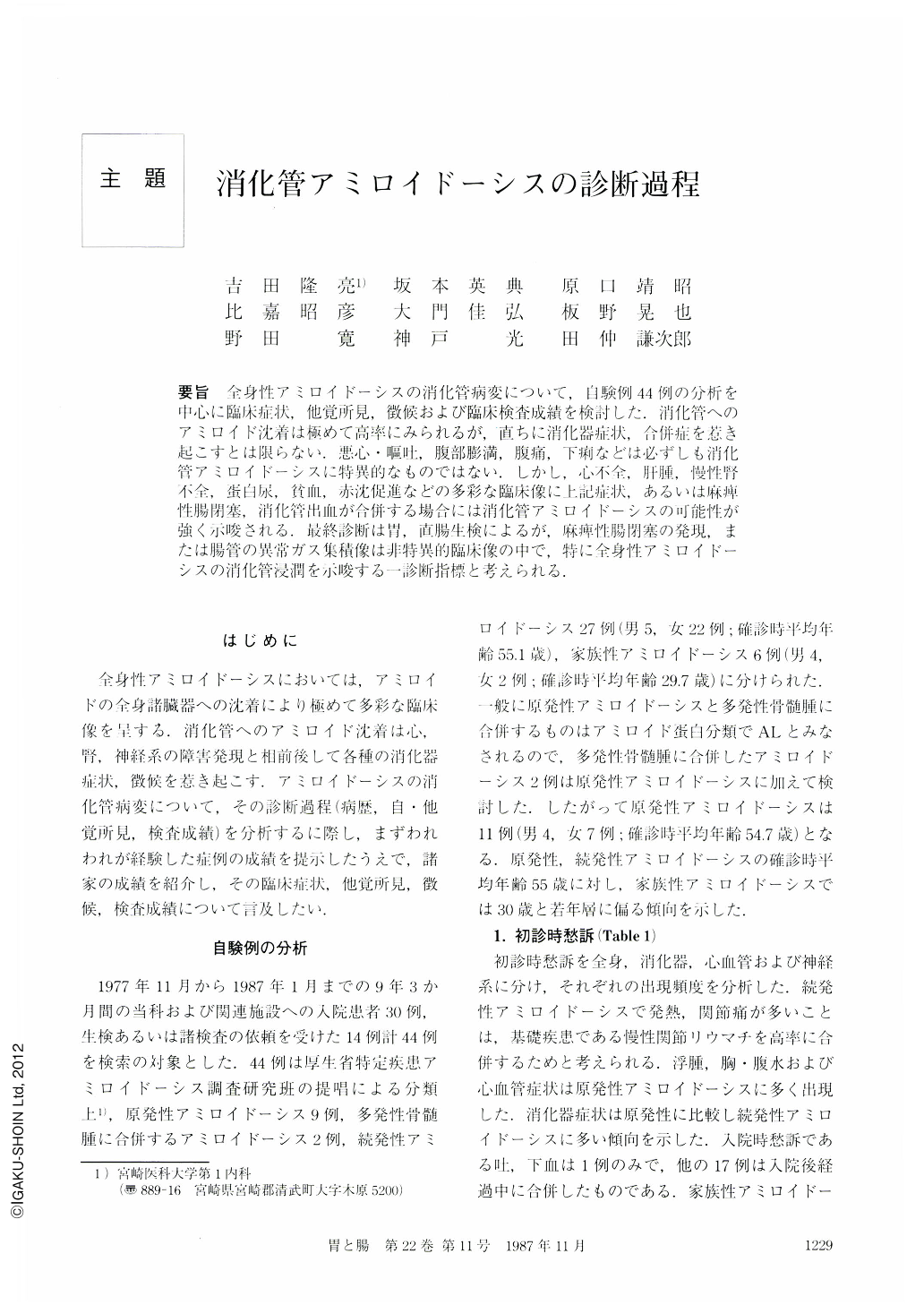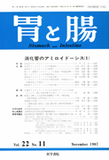Japanese
English
- 有料閲覧
- Abstract 文献概要
- 1ページ目 Look Inside
要旨 全身性アミロイドーシスの消化管病変について,自験例44例の分析を中心に臨床症状,他覚所見,徴候および臨床検査成績を検討した.消化管へのアミロイド沈着は極めて高率にみられるが,直ちに消化器症状,合併症を惹き起こすとは限らない.悪心・嘔吐,腹部膨満,腹痛,下痢などは必ずしも消化管アミロイドーシスに特異的なものではない.しかし,心不全,肝腫,慢性腎不全,蛋白尿,貧血,赤沈促進などの多彩な臨床像に上記症状,あるいは麻痺性腸閉塞,消化管出血が合併する場合には消化管アミロイドーシスの可能性が強く示唆される.最終診断は胃,直腸生検によるが,麻痺性腸閉塞の発現,または腸管の異常ガス集積像は非特異的臨床像の中で,特に全身性アミロイドーシスの消化管浸潤を示峻する一診断指標と考えられる.
A total of 44 consecutive cases of systemic amyloidosis involving the gastrointestinal (GI) tract were studied in terms of clinical symptoms, signs and laboratory findings. Although amyloid deposition in the GI tract is reported to be high, it does not always produce GI symptoms or complications. Likewise, symptoms such as nausea, vomiting, abdominal distention, abdominal pain or diarrhea are not pathognomonic in systemic amyloidosis involving the GI tract, However, congestive heart failure, hepatomegaly, chronic renal failure, proteinuria, anemia and increased ESR in addition to paralytic intestinal obstruction or GI bleeding may strongly suggest the presence of GI involvement in systemic amyloidosis. The final diagnosis is attainable by gastric or rectal biopsy. Among nonspecific clinical features, the presence of paralytic ileus or abnormal accumulation of GI gas may be a valuable diagnostic adjunct in patients with systemic amyloidosis involving the GI tract.

Copyright © 1987, Igaku-Shoin Ltd. All rights reserved.


